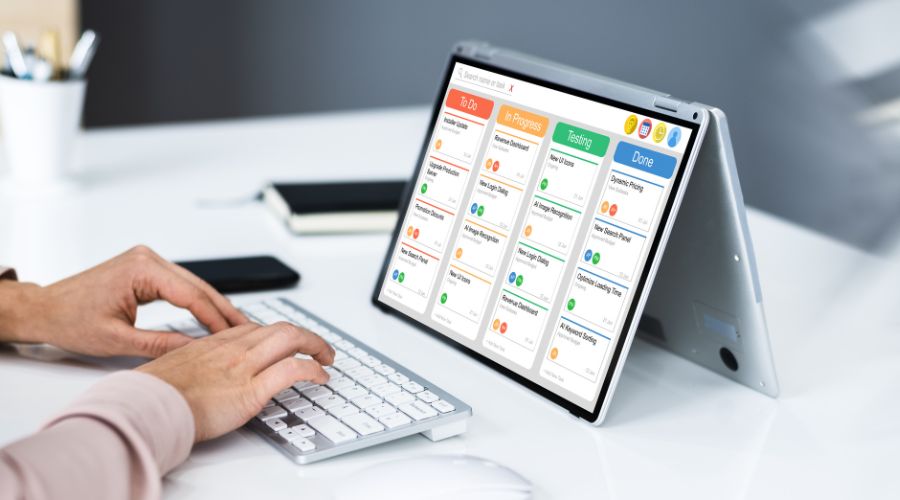If you’re thinking of going into business to generate revenue, finding ideas for micro-SaaS niches is among the most effective and popular ways to get started.
But how do you find the right micro-SaaS idea to succeed long-term?
Keep reading to learn more about examples of profitable niches for micro-SaaS.
How Does Micro-SaaS Differ from a Traditional SaaS Business Model?
Unlike a SaaS-based model, micro-SaaS business usually have a more narrow focus.
In fact, they are known to provide solutions to a singular pain point for a dedicated customer base.
Their product may be closely related to traditional SaaS application builders, but the pricing strategy and target audience will be more specific.
There are some essential features that virtually every micro-SaaS has in common.
One of their typical attributes is that micro-SaaS ideas don’t take too long to develop.
More specifically, it takes no less than six months in general to make the product from scratch.
Additionally, compared to other software companies and their products, it takes minimal resources and very little investment to build a micro-SaaS product and maintain it.
This is primarily because you don’t need complex features to build a good micro-SaaS idea.
With a micro-SaaS business, all you need is an idea. You don’t need to code, especially given the no-code platforms we have today.
The flexibility allows you to save money and invest it in other areas, such as sales and marketing.
You can even use the money to work with a very small team for your micro-SaaS startup.
Also, their narrow target audience indicates fewer competitors in the specific niche.
This allows micro-SaaS companies to specifically narrow their niche down and pursue strong growth objectives.
The Best Niche Ideas for Solopreneurs
1. KPI Tracking

Key performance indicators (KPIs) are necessary and easy-to-understand metrics that help even small business owners align their sales and marketing efforts and ensure that the business is always “on track”.
With the ability to track their progress and identify problems before they show up, they can save time and prevent unwanted stress.
Pick the audience you intend to engage.
Because of this, it’s vital to develop KPIs that are not just relevant to your market’s problems but are also adequate in resolving them.
Here’s how a micro-SaaS concept for a KPI works:
- Pick the audience you intend to engage.
- Select the KPIs and specific metrics that they would want to track.
- Choose relevant data sources.
- Create a dashboard with straightforward and valuable graphs.
- Share the dashboard.
2. Clinic Management Tool

As healthcare issues increase and technology continues to evolve, being in a micro-SaaS niche that manages the daily operations of small clinics in underprivileged communities is a good idea.
A tool like this can help staff members better serve their patients and adds organization to a hectic workplace.
Apart from that, automating various tasks reduces paperwork and wait times, leading to better outcomes for doctors and patients needing medical support.
You can focus on areas such as finance, scheduling, visitor management, administrative tasks, and patient tracking.
To bring this idea to fruition, you’ll have to define which categories of users you’re building this program for.
Once you’ve selected your audience, decide what area your clinic management tool will focus on and start there.
You can also pick more than one area if you’re comfortable juggling the task.
After that, start building out premium features for them to manage, like billing, recurring invoices, scheduling, and so on.
3. Customer Relationship Management for WordPress

WordPress holds an impressive 65% market share for content management systems (CMS).
Thus, it makes sense to consider being in the Customer Relationship Management (CRM) niche for WordPress.
However, before you do that, make sure that you understand what people are looking for if they adopted a CRM on their site.
Depending on the business size, some only require basic features, while others need powerful integrations and advanced customization options.
To build a competitive CRM, you can think of the following features:
- Messaging tools
- Reporting modules that produce customized reports
- WooCommerce integration
- Task schedulers
- Activity logs
- Custom filters
- Invoicing software
- Easy-to-use dashboard for customers and managers
Once you choose your audience, building your CRM can now be easier.
With applications like Jet Engine or Elementor, you can develop a custom database that can serve as the prototype for a more complex product down the line.
4. Product Feedback

One of the keys to micro-SaaS success is continuous customer feedback.
After all, getting ideas about how people feel about your product, no matter what stage of development it’s in, will help you make it more responsive to your audience’s challenges.
And the more your micro-SaaS product addresses the specific problem they have, the more you can grow.
Because of this, a tool that collects and analyzes user feedback is one of the best micro-SaaS business ideas.
The key is to design widgets and templates for multiple feedback themes, such as integrations, bug reports, and feature requests.
You can also integrate tools like Trello, Zapier, and Slack to allow collaboration and instant messaging between professional organizations.
Apart from that, your tool should offer the chance to construct a product roadmap based on customers’ most requested features.
5. Sales Management Software for Freelancers and Artists

Freelancing and art are two categories that are becoming increasingly popular as individuals work from home and set up home offices.
Their popularity has led to the possibilities for a platform that will allow artists to manage negotiations and sell their artwork in one place.
This way, they can spend more time doing what they love most: art creations.
To this end, sales management software for freelancers and established artists is a good niche.
A tool like that can help them easily track orders, manage sales, and accept payments.
You can give them the option to put all of their artwork together as well from various categories and present it as an art gallery.
Just make sure to list down all the other features that you think would benefit someone in the position of wanting to appeal to potential art investors.
6. Airbnb Management Tool

Hosting an Airbnb is an incredible feat, but the logistics behind it all and managing the Airbnb on top of that at the same time is a highly challenging task.
This rings true especially when you consider Airbnb hosts that oversee multiple properties simultaneously.
These hosts have to deal with a lot of people, such as those who advertise the property to customers, their very own employees, and so on.
While you won’t be able to provide this app at first to Airbnb owners worldwide, you can start with one country or even just a few states to see how it goes.
Include listing and automation features and ensure that you’re offering a more detailed software program than what already exists.
Be sure to choose beta users in a specific area and ask them how they like what you’ll build.
7. Email Management Tool

No matter what company or person you’re trying to market your micro-SaaS to, emails play a considerable role in almost everyone’s life.
Because of this, people with excessive emails to organize and filter through daily can benefit from an email management tool.
Some of the pressure points you can incorporate include providing insights on when emails should and shouldn’t be sent, analytics, and tracking to improve productivity.
You can incorporate tracking to help learn about email reply times and create a productive customer service email team.
8. Journaling Software

There are plenty of studies showcasing how journaling even for one minute a day can help improve mental health and productivity.
However, not everyone has the time to sit down and write down all their thoughts at the beginning or end of the day.
In line with this, a great business idea to nail down is journaling software—an app that can make journaling thoughts and feelings more manageable.
There are various different approaches you can take here.
Some out there only ask that you write a sentence daily, while others provide prompts.
You can even go as far as to allow the software to offer options for why they’re journaling, such as work stress, lack of focus, or general mental health issues.
Whatever approach you want to take, offering busy people a more manageable way to journal is a great micro-SaaS niche to explore.
These can be very beneficial for startup founders who have a dozen things going on during their day and need a way to reflect and make more rational business choices.
9. NFT Marketplace Software

With the rising popularity of non-fungible tokens (NFTs) comes people looking for the right software to help them manage their NFTs and where to trade them.
It’s a newer niche in the micro-SaaS world, but that’s what makes this an excellent idea to jump into sooner rather than later.
You can work with businesses that use NFTs as a transaction option or marketplace option for management.
Note, though, that NFTs can be challenging to understand and trade for beginners.
In addition, you need to have some knowledge of NFTs on your part to launch it successfully.
10. Personal Planning Software

Startup founders are likely to have a million and one thing going on at one time.
The best thing you can do is offer them personal planning software for greater productivity control.
Sure, there are calendars and reminder apps on most smartphones nowadays.
But, they’re scattered throughout various devices, and having an app or software that keeps everything in one place will make things feel more manageable.
Some features you can provide for startup founders include a thorough calendar with color-coordinating abilities, reminders, and to-do lists that they can easily scratch off when they’ve completed a task.
You can even try to incorporate an assistance component that can help organize their schedules.
This will help ensure that they stay on track with all their meetings, emails, and personal stuff.
Final Thoughts on Micro-SaaS Niches
Deciding which micro-SaaS niche to explore can be challenging.
This is especially true when you’re trying to create a product that stands out from those already existing in the market.
However, there are plenty of ideas available as long as you focus on a specific market you want to help.
And if your next challenge is low micro-SaaS user adoption, feel free to adopt our recommendations in our article.
You can also check out the video below to learn what are the characteristics of great micro-SaaS niches.

